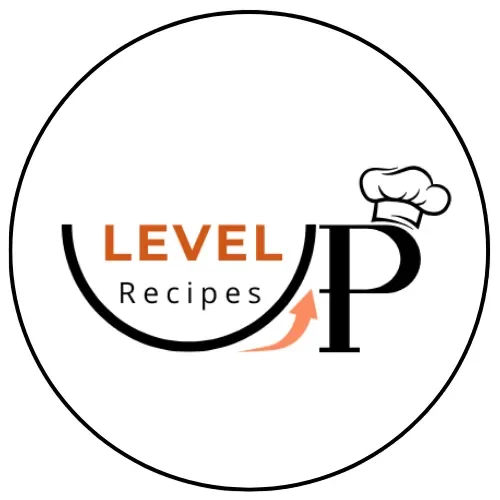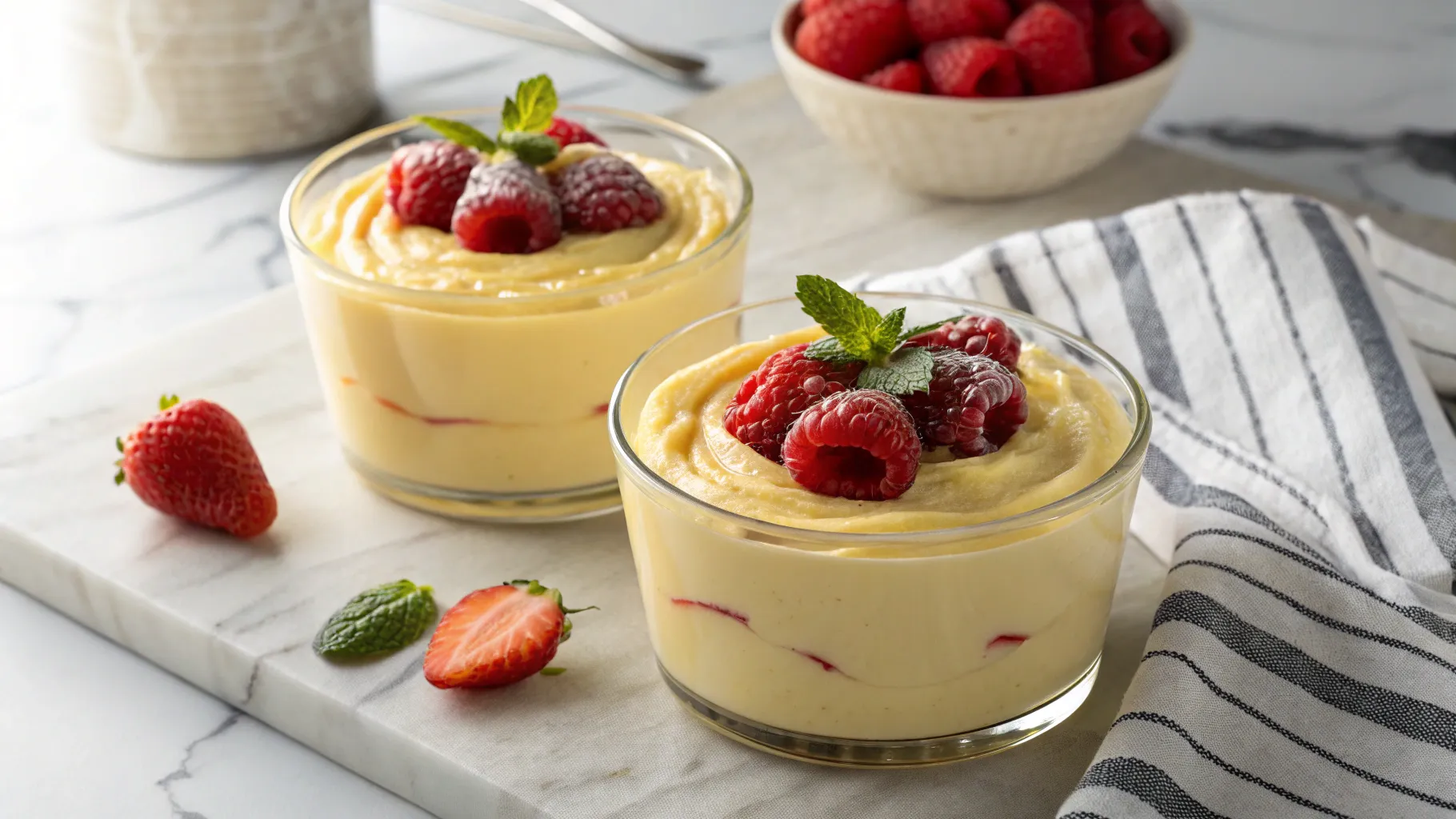There’s something endlessly comforting about a perfectly made Creamy Custard. With its silky texture, delicate sweetness, and versatile flavor, Creamy Custard remains one of the most beloved desserts around the world. Whether served in ramekins, layered in a trifle, or poured over pastries, its charm lies in the balance of simplicity and elegance.
But beyond the basics, what exactly makes custard creamy? From classic stovetop methods to international twists and foolproof tricks, we’ll walk you through everything you need to master this timeless dish.
For another creamy indulgence, try our Strawberry Cheesecake Stuffed Donuts, light, golden donuts bursting with luscious strawberry cheesecake filling, combining two classic desserts in every bite.
What Is Custard?
At its core, custard is a mixture of milk (or milk alternatives), egg yolks, and sugar, gently heated until thickened. The result? A silky, luxurious texture that’s spoonable, pourable, or even firm enough to slice, depending on how it’s cooked.
There are two main categories of custard:
- Stirred (stovetop) – Smooth and pourable (e.g., crème anglaise)
- Baked – Spoonable and set (e.g., flan, baked custard)
Creamy custard is often enriched with cornstarch, cream, or plant-based milk to boost its luscious consistency.
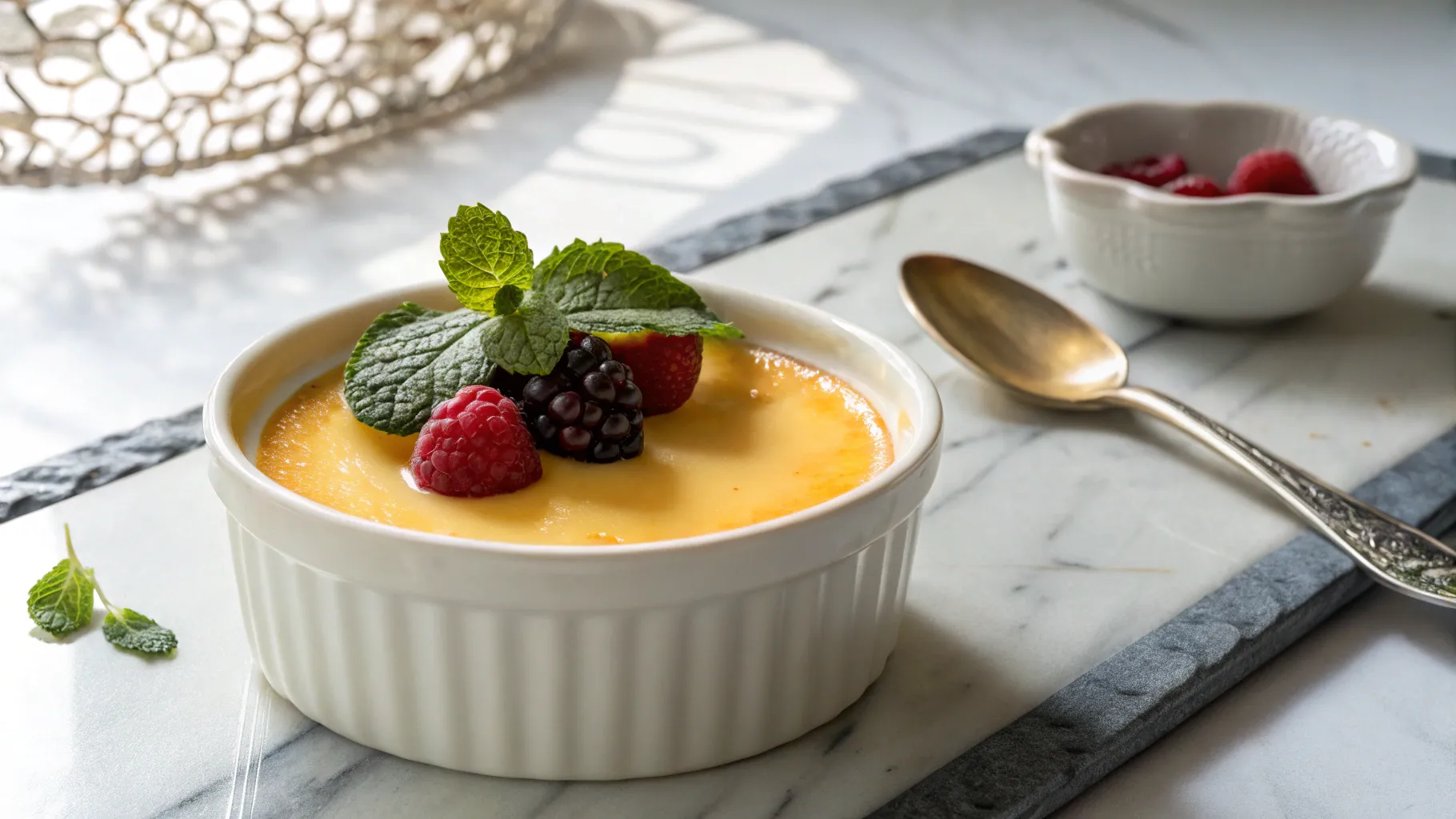
The Science Behind a Creamy Custard
So, what makes custard creamy rather than curdled or rubbery? It all comes down to gentle heat and even cooking. Custards thicken through the coagulation of egg proteins, but they can quickly go wrong if overheated.
To ensure perfect texture:
- Temper the eggs – Warm them slowly with hot milk to prevent scrambling
- Cook over low heat – Stir constantly and remove from heat before boiling
- Strain the mixture – Use a fine-mesh sieve to remove any lumps
- Chill slowly – Let it cool at room temperature before refrigerating
Essential Ingredients for Classic Creamy Custard
Here’s what you’ll typically need to make Creamy Custard:
- Whole milk or oat/almond milk
- Egg yolks (for richness)
- Granulated sugar
- Cornstarch or flour (optional, for added stability)
- Vanilla extract or whole vanilla bean
- Salt (just a pinch to balance sweetness)
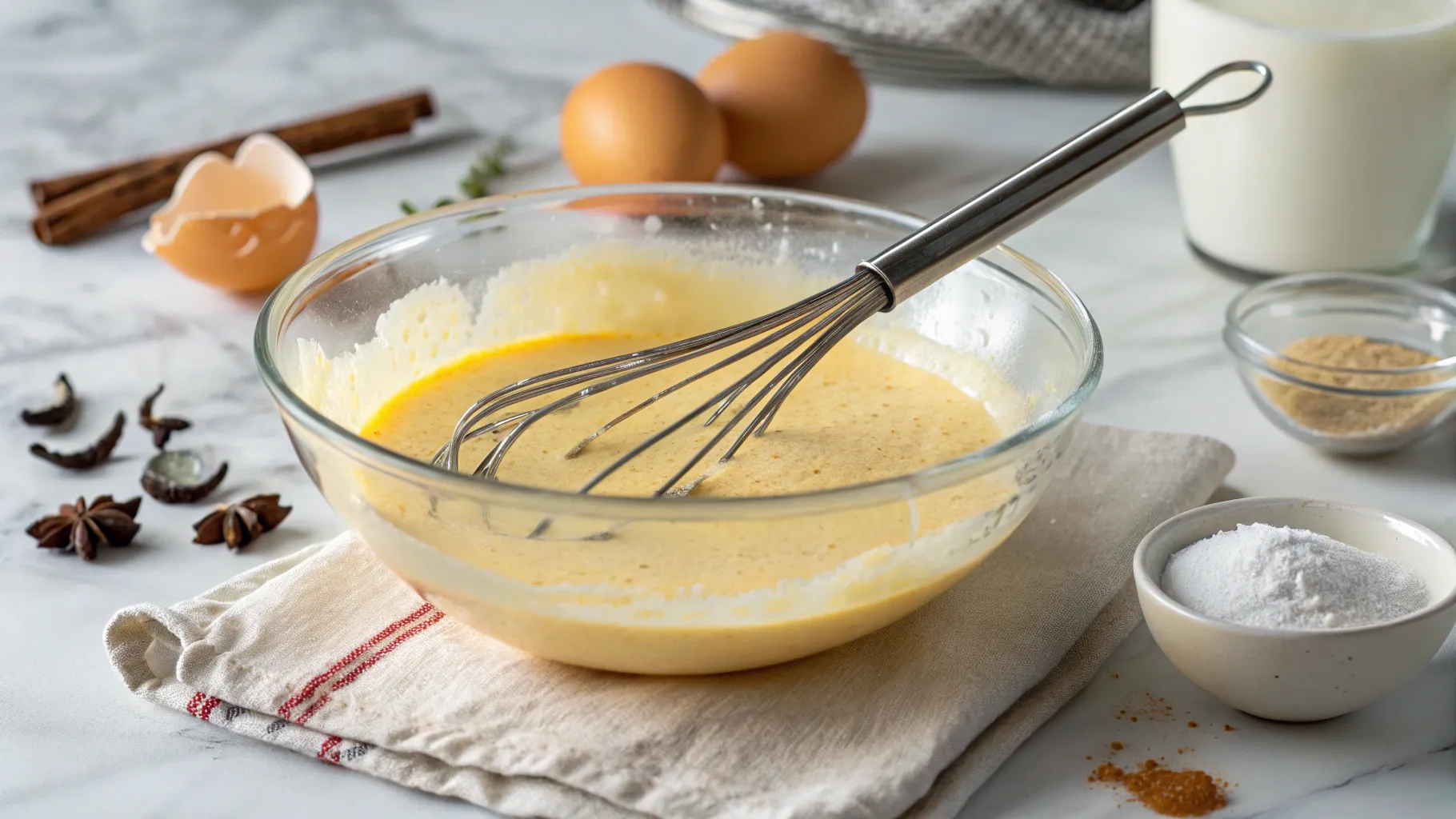
How to Make Creamy Custard on the Stovetop
Step 1: Heat the Milk
-
In a saucepan, warm milk with vanilla until it begins to steam. Do not boil.
Step 2: Whisk the Egg Yolks
-
In a separate bowl, whisk yolks with sugar (and optional cornstarch) until pale and smooth.
Step 3: Temper the Eggs
- Slowly pour a bit of warm milk into the yolks, whisking constantly.
- Gradually add the rest of the milk.
Step 4: Cook Low and Slow
- Return the mixture to the pot.
- Stir continuously over medium-low heat until thick enough to coat a spoon.
Step 5: Strain and Chill
- Remove from heat and pour through a fine sieve into a clean bowl.
- Let cool to room temperature, then refrigerate.
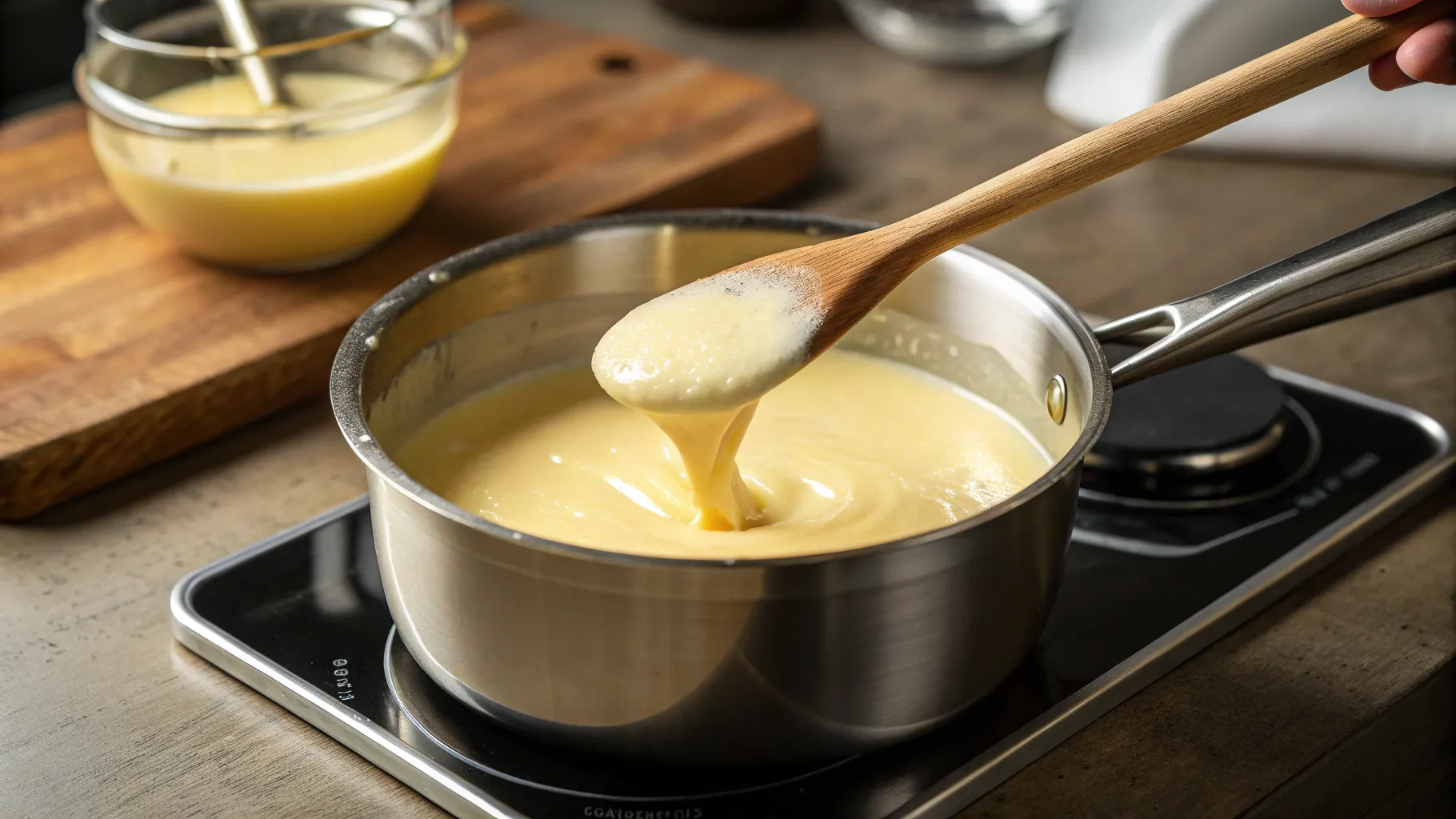
Common Custard Mistakes & How to Avoid Them
Even with just a handful of ingredients, Creamy Custard can be deceptively tricky to master. Since it relies so much on technique, even a slight misstep with temperature, timing, or texture can turn your smooth custard into something curdled, runny, or grainy.
The good news? With a bit of know-how and a few smart adjustments, most custard mishaps are totally avoidable, or fixable. Let’s break down the most common mistakes and how to troubleshoot them like a pro.
1. Curdled or Scrambled Texture
What happened:
The custard was either cooked at too high a heat or the egg yolks were not properly tempered before combining with the hot milk.
How to prevent it:
- Always temper eggs by slowly whisking a small amount of hot milk into the yolks before adding them to the pan.
- Keep the heat low and steady, never let custard boil.
- Stir constantly and remove from heat as soon as it coats the back of a spoon.
How to fix it:
- If caught early, immediately strain through a fine-mesh sieve.
- For advanced rescue, use a blender to smooth out the texture (not ideal, but salvageable).
2. Watery or Too Runny Custard
What happened:
The custard was likely undercooked or didn’t have the correct ratio of thickening agents (eggs or cornstarch).
How to prevent it:
- Ensure the mixture reaches the proper temperature (about 170–175°F or 77–80°C).
- Use a kitchen thermometer or the spoon test: custard should coat the back of a spoon.
- Use enough egg yolks or starch depending on your recipe style.
How to fix it:
- Return it to low heat and continue cooking, stirring gently.
- Add a slurry of cornstarch and cold milk if necessary, then cook until thickened.
3. Grainy or Lumpy Texture
What happened:
Custard was either overcooked, not stirred well, or wasn’t strained before chilling.
How to prevent it:
- Stir continuously while heating to prevent sticking and uneven cooking.
- After cooking, strain through a fine sieve to remove any bits of cooked egg.
- Avoid overheating, once it thickens, remove from the stove.
How to fix it:
- Reheat with a splash of milk and whisk gently to smooth out the texture.
- If grainy due to curdling, try blending briefly.
4. Overly Thick Custard
What happened:
Too much starch, too many eggs, or the mixture was cooked too long.
How to prevent it:
- Follow the recipe’s ratios closely, especially when substituting ingredients.
- Remove from heat immediately once the desired consistency is reached.
How to fix it:
- Whisk in a small splash of warm milk, one tablespoon at a time, until loosened.
- For future batches, reduce thickening agents or lower your cook time slightly.
Mastering creamy custard is all about patience, precision, and practice. By understanding what can go wrong, and knowing how to fix or prevent it, you’ll be well on your way to a flawless spoonful every time.
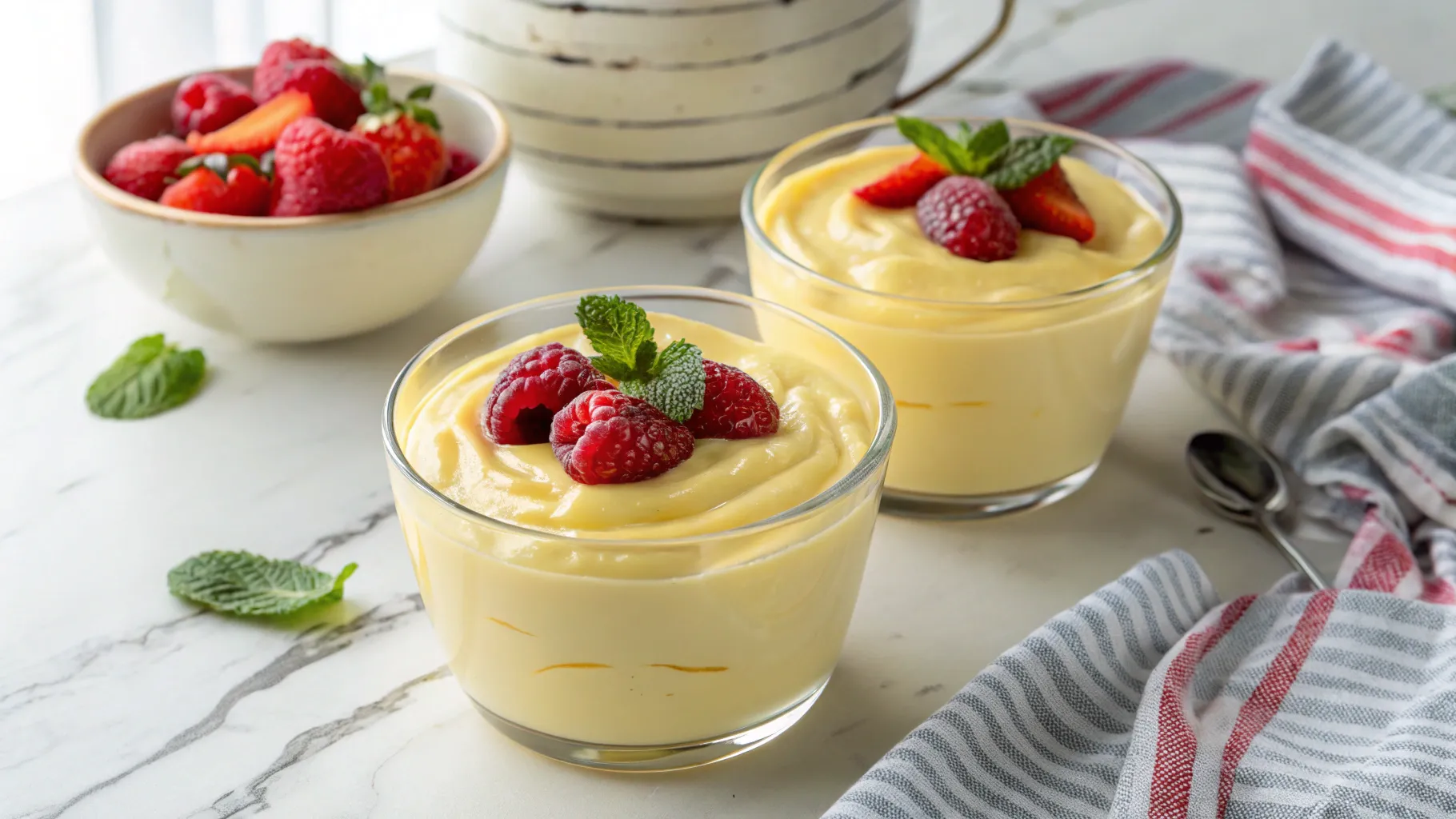
Custards from Around the World
While creamy custard is a beloved classic in Western kitchens, its influence reaches far beyond. Around the globe, various cultures have developed their own take on this egg-based delight, from savory bowls to spiced sweets, served either warm or chilled.
These international variations not only showcase custard’s versatility but also open the door to exciting new flavor profiles. Let’s take a tour of the most iconic custards from different corners of the world.
1. Crème Anglaise (France)
Smooth, light, and pourable, crème anglaise is the French version of stirred custard. It’s often served warm or cold as a sauce over cakes, fruits, or puddings.
Key features:
- Made with milk, egg yolks, sugar, and vanilla
- Cooked gently over low heat until thick enough to coat a spoon
- Never boiled, ensuring a silky finish
💡 Pro tip: Try it over sponge cake or poached pears for a refined dessert experience.
2. Chawanmushi (Japan)
Not all custards are sweet. Chawanmushi is a savory, steamed custard served in small cups as part of traditional Japanese meals.
Key features:
- Made with eggs, dashi (umami-rich broth), soy sauce, and mushrooms
- Often includes ingredients like shrimp, chicken, or ginkgo nuts
- Steamed gently until set with a jiggly, soft texture
💡 Pro tip: Served warm, it’s a favorite in kaiseki and sushi restaurants.
3. Natilla (Spain)
Natilla is Spain’s answer to classic egg custard, and it’s as comforting as it is nostalgic.
Key features:
- Infused with cinnamon and lemon peel
- Thickened with egg yolks and sometimes a touch of cornstarch
- Topped with ground cinnamon or a biscuit
💡 Pro tip: Often enjoyed cold as a traditional dessert in Spanish households.
4. Zabaglione-style Custard (Italy)
Also known as zabaione, this light and airy custard is made by whisking egg yolks and sugar over a gentle heat until it becomes thick and foamy.
Key features:
- Typically served warm in glasses or layered with fruit
- Can be eaten as a standalone dessert or a topping
- Has a mousse-like texture and delicate sweetness
💡 Pro tip: Perfect for those who enjoy a more whipped and fluffy custard.
5. Coconut Milk Custards (Tropical & Dairy-Free)
For those seeking plant-based or dairy-free options, coconut milk-based custards offer a lush, tropical alternative.
Key features:
- Use coconut milk or coconut cream in place of dairy
- Naturally sweet and fragrant
- Often paired with flavors like lime, mango, or pandan
💡 Pro tip: Ideal for vegan menus or warm-weather dessert spreads.
Exploring Creamy Custard variations from around the world is a delicious reminder of how one simple technique, gently cooking eggs and liquid, can create endless, extraordinary results. Whether you’re craving something sweet, savory, classic, or modern, there’s a Creamy Custard out there to satisfy every taste.
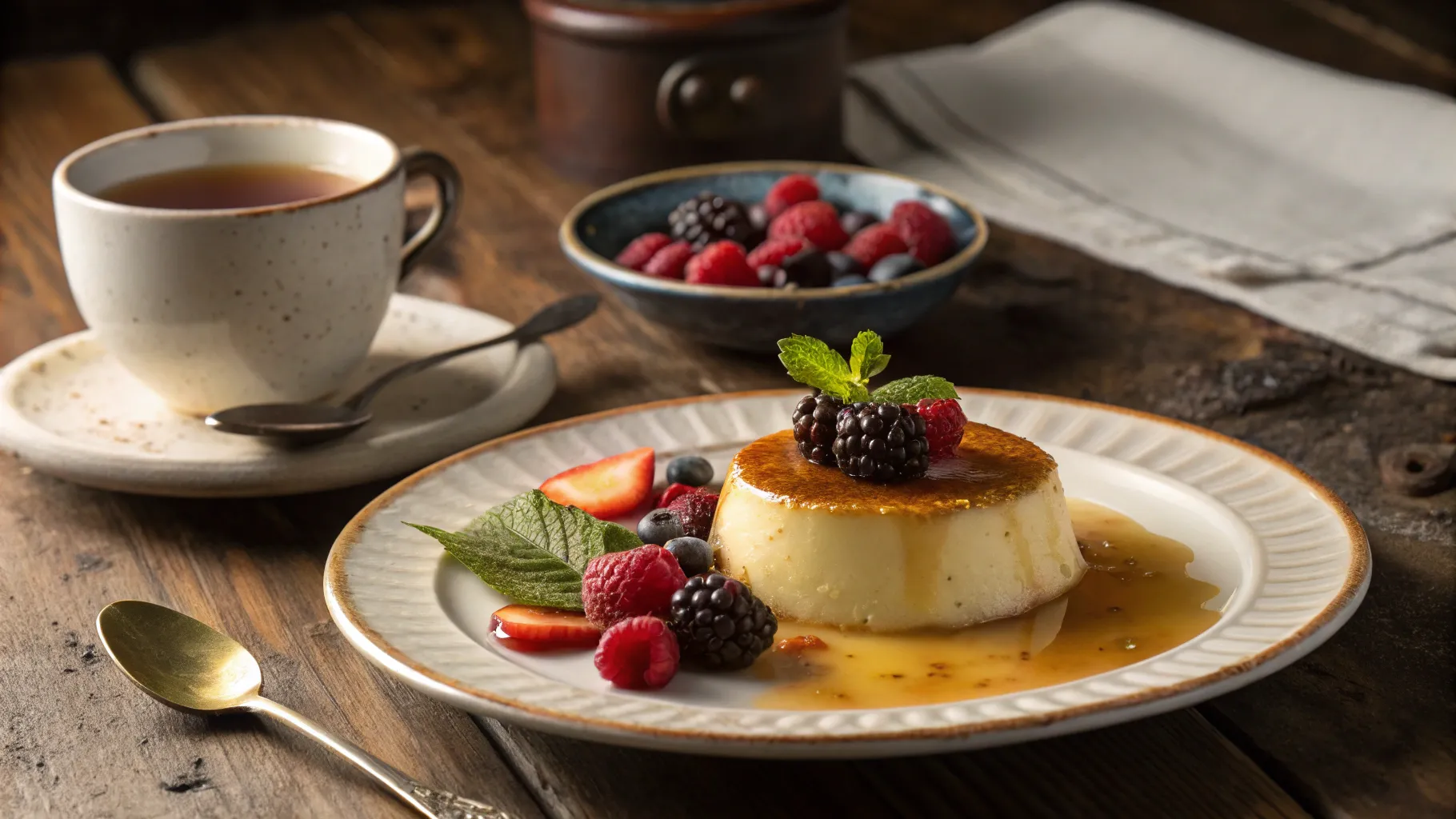
Flavor Infusions & Serving Suggestions
There’s no shortage of ways to dress up your custard:
1. Flavor Infusions
- Citrus zest (lemon, orange)
- Cardamom or cinnamon
- Matcha or espresso powder
- Fresh herbs (e.g., mint, thyme for savory versions)
2. Toppings & Pairings
- Fresh berries or fruit compote
- Toasted nuts or granola
- Shaved chocolate or cocoa nibs
- A drizzle of honey or maple
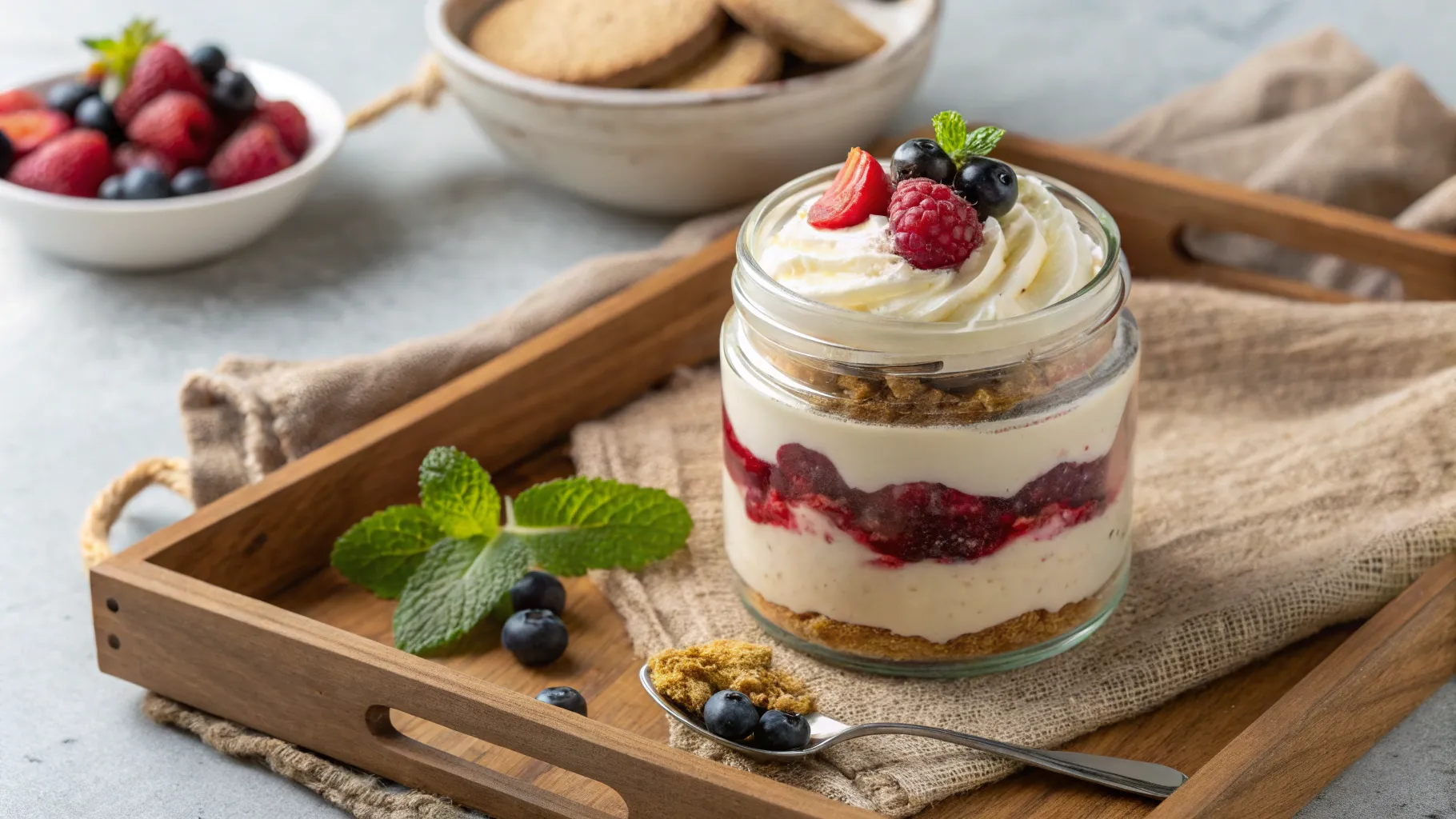
Storing & Reheating Custard
- Fridge: Store in airtight containers up to 4 days
- Freezer: Not recommended, texture will break
- Reheat gently: Use a double boiler or low-power microwave setting
- Revive texture: Stir until smooth again, or add a splash of warm milk
💡 Pro tip: Cover surface with parchment or plastic wrap to avoid a skin forming.
FAQs About Creamy Custard
Q1: What makes custard creamy?
The ratio of egg yolks to liquid, the addition of starch (optional), and slow cooking are key.
Q2: Is custard the same as pudding?
Not quite. Pudding often contains more starch and is usually thicker, while custard relies on eggs.
Q3: Can I make custard without dairy or eggs?
Yes! Use plant-based milk and cornstarch or silken tofu as a thickener.
Q4: Why did my custard curdle?
Overheating or skipping the tempering step is often the culprit.
Q5: Can custard be served warm?
Yes, though many prefer it chilled, stirred custards like crème anglaise are delicious warm.
Q6: Can you bake custard instead of cooking it on the stove?
Yes! Try water-bath baking for silky results like flan or crème brûlée.
Final Thoughts
From holiday dinners to everyday desserts, creamy custard is one of those classic recipes every home cook should master. It’s incredibly versatile, forgiving when done right, and easily adaptable to different diets and cuisines.
Whether poured, scooped, or spooned from a ramekin, this silky delight continues to stand the test of time, and once you learn the basics, the flavor possibilities are endless.
💡 Enjoyed this recipe?
Follow us for daily kitchen tips and tasty inspiration!
📌 Pinterest | 📘 Facebook | 📸 Instagram

Creamy Custard: A Classic Dessert with Irresistible Texture
This classic creamy custard is smooth, rich, and perfect for serving on its own or as a base for layered desserts. Made with simple pantry ingredients and gently cooked to perfection, it’s a timeless treat for any occasion.
- Total Time: 25 minutes
- Yield: 4–6 servings 1x
Ingredients
- 2 cups whole milk or non-dairy alternative
- 4 large egg yolks
- 1/3 cup granulated sugar
- 2 tablespoons cornstarch (optional for thicker texture)
- 1 teaspoon vanilla extract or 1/2 vanilla bean
- Pinch of salt
Instructions
- In a saucepan, heat the milk with vanilla until warm (not boiling).
- In a bowl, whisk egg yolks with sugar (and cornstarch if using) until pale.
- Slowly temper the yolks by adding warm milk in a thin stream, whisking constantly.
- Pour the mixture back into the saucepan and cook over low heat.
- Stir continuously until the custard thickens and coats the back of a spoon.
- Remove from heat, strain through a fine sieve, and let cool.
- Chill before serving, or use immediately in other desserts.
- Prep Time: 10 minutes
- Cook Time: 15 minutes
- Category: Dessert, Basics
- Method: Stovetop
- Cuisine: Classic European, Global
Keywords: creamy custard, homemade custard, egg custard, vanilla custard, stovetop custard, smooth dessert, easy custard recipe
